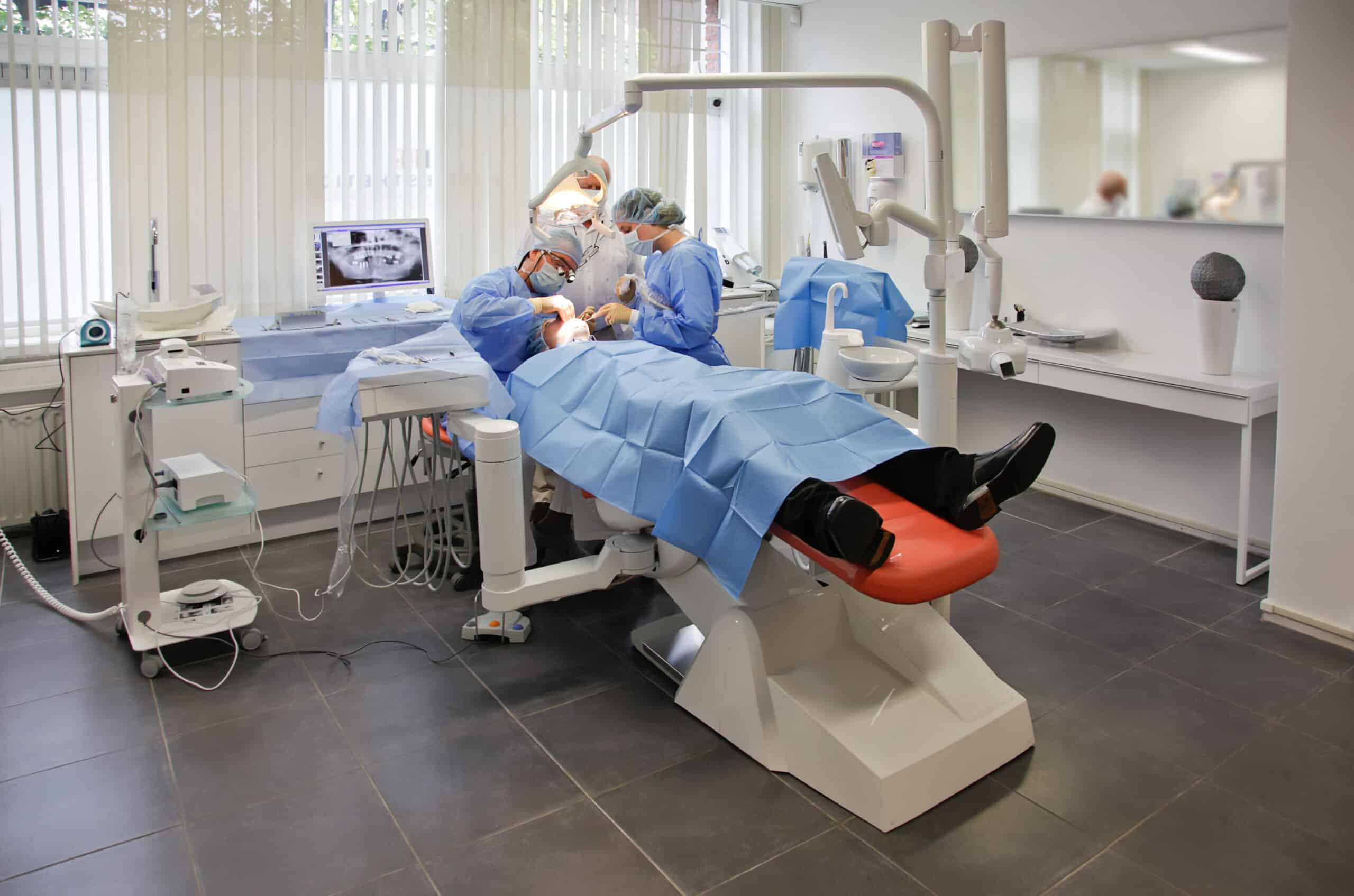In the Dental Implant Process the placement of dental implants is performed to replace the teeth that have been lost. And thus avoid health problems arising from their absence (bone loss, excessive wear of the pieces, tooth movement …).
Likewise, the replacement of dental pieces plays a fundamental role in improving aesthetics and rejuvenating the smile.
Since this is one of the most common treatments that we carry out in our dental clinic; we are going to detail the complete process for the placement of implants.
The complete process for the placement of an implant: step by step
Generally speaking, we can say that the placement of dental implants is carried out in four different steps:
- Diagnosis and planning
- Surgery
- Osseointegration process
- Restoration
1. Diagnosis and planning – Dental Implant Process
This is a fundamental phase for implant placement. This is due to the fact that a good diagnosis of the case and a correct planning of the surgery are essential for the subsequent success of the treatment.
This preliminary study is based on radiographs and intraoral and extraoral photographs. As well as a 3D scan of the patient’s mouth.
With all these records, the implantologist must assess the patient’s case and plan the surgery.
For example, it is in this step that the most appropriate type of intervention is defined and it is determined whether the patient has enough bone to anchor the implant to.
Other details such as the position, size and inclination of the implants to be placed are also planned.
There are two main techniques for implant placement: traditional surgery and immediate loading.
2. Surgical intervention – Placement
Once the implantologist has studied the case, the next step is to perform the surgery.
With it, the specialist will insert the implants into the dental bone in order to subsequently place the prosthesis.
At this point, it is important to point out that there are two techniques for placing implants.
Traditional surgery
As its name suggests, this is the conventional type of surgery.
In it, the implantologist makes a small incision in the patient’s gum, places the titanium implants and places stitches.
After that, and after a few days, the patient goes for a revision in which the stitches are removed.
And, three months later, the patient returns to the office to have the crowns placed.
You may be interested in > Dentures: types and advances in implantology
Dental implant
Enlarge image
DENTAL IMPLANT
Immediate loading surgery
The fundamental difference between immediate loading surgery and traditional surgery is that the patient does not have to wait three months for the crown to be placed.
Patient is fitted with a provisional crown. that is to say, on the day of surgery, that serves as a tooth both esthetically and functionally.
Once the implants have been placed, the prosthodontist designs the prosthesis that will be placed until healing occurs.
Opting for one type of technique or another depends both on the patient. As it could not be otherwise, and on the surgeon’s criteria.
This professional must also evaluate, in the previous study, which is the most appropriate type of surgery for each person.
Follow the recommended guidelines
If you want your implants to last for many years… you will have to follow the advice regarding hygiene and brushing of the implants. If you smoke, the best thing to do is to stop smoking.
3. Osseointegration – Dental Implants Process
This third step refers to the healing process of the implant.
That is, the time that has to pass from the time the surgical intervention is performed until the crown is placed.
As we have already pointed out in the previous step, this time frame only applies to traditional implant surgery.
At this point it is essential to point out that the osseointegration or healing period of the implant is three months.
Osseointegration is, therefore, a biological process in which the implant bonds to the bone. Conferring long-term stability and duration to the treatment.
This stage is fundamental for the long-term survival of the implant.
Although the treatment is unlikely to fail – its success rate is 98% – problems; if any, usually appear during the osseointegration period.
In order for the recovery to go according to plan, the implantologist recommends the patient to follow a series of guidelines, such as correct hygiene and brushing of the teeth and restriction of smoking, in the case of smokers.
Osseointegrated implant
Enlarge image
CROWN ON IMPLANT
4. Restoration – Recovery
We take the molds for fabrication of definitive prosthesis. Once the healing stage is over.
Once the implantologist has manufactured the crown, he will proceed to place it in the patient’s mouth.
After this, the person will recover complete normality in his or her life. Since the prosthesis will behave like his or her old natural teeth.
In other words, the treatment will help the patient to recover lost functionality, chewing and esthetics.


